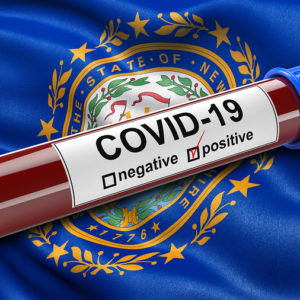For weeks political and media figures insisting the total economic shutdown continue, to quote Gov. Andrew Cuomo, “indefinitely” have emphasized that we must follow the data. Gov. Chris Sununu has acknowledged that we’ve “flattened the curve,” but argues that the shutdown must continue over concerns about the future spread of the virus. Too dangerous to consider allowing Granite Staters to go back to work.
OK, let’s look at the data and evaluate the danger. Is coronavirus really about to kill us all? What are the actual numbers?
“Cases” vs. Test Results:
You hear reports like this all the time: “Health Commissioner Lori Shibinette said 104 new cases were confirmed Friday, bringing the total to 2,947 over the course of the pandemic,” as WMUR reported it. Actually, that’s not true. The DHHS “announced 104 new positive test results for COVID-19,” according to their press release. On Saturday, they announced another 71 positive tests, bringing the total to 3,011.
What’s the difference? When the average person hears “cases,” they think of illnesses. “There’s another case of measles reported….” or “Sounds like someone’s got a case of the Mondays.”
Infections AREN’T cases. As we all know, most people exposed to COVID-19 show so few — if any — symptoms, they don’t even know they’ve been infected. So tracking the spread of new infections says nothing about how many people are sickened, hospitalized or dying from the virus.
And remember: If a vaccine isn’t found, eventually every person will be infected/exposed to COVID-19. Everyone.
So How Many Granite Staters Have Been Exposed?
At NHJournal, we’ve been asking the same question. Until there’s random testing done specifically for the purpose of determining the virus’s reach, we won’t know. Commissioner Shibinette told us during Friday’s presser that sampling is a relatively low priority and, given the gap between the at-risk communities and the general population (see below), that makes sense.
Thus far, NH has administered around 33,000 tests and had 3,011 positive results for an infection rate of nine (9) percent. But we’ve largely restricted testing to people with symptoms or in higher-risk groups, to that number is almost certainly too high.
Some studies estimate between 3-5 percent of the U.S. population has been exposed. If you assume that Granite Staters tested thus far are twice as likely as the overall population to have been exposed, that puts NH right in the national range at 4.5 percent. That comes to around 60,000 people exposed to the virus.
How Dangerous is COVID-19 To The Average Granite Stater? Based on these numbers — not very. Once again, 60,000 exposures is an estimate. Take the 24 non-nursing-home deaths and divide them among 60,000 people and that’s a death rate of 0.0004. Take the five –that’s right, just five — deaths of people under 60, and the death rate is 0.000083.
In other words, if you’re a healthy person under 60 who doesn’t work in a nursing home, the odds that coronavirus will kill you are statistically zero.
So Who IS the Coronavirus Killing?
People in nursing homes, that’s who. Based on the latest numbers DHHS has released, 80 percent of all deaths have been among the less-than 2 percent of the state’s population living in nursing homes or longterm care facilities.
When it’s not killing nursing-home patients, it’s killing people over 70 years old. The total number of coronavirus deaths in the state among people under 70 is 13.
Unfortunately, the state DHHS doesn’t make data available that other states do regarding co-morbidities like illnesses, previous hospitalizations, etc. But if national numbers are a guide, most under 70 deaths had an underlying contributing factor.
Once again: Healthy and under 70 years old, you’re at virtually no risk of dying from exposure to coronavirus.
What About Hospitalizations?
Great question, particularly given that the original rationale for shutting down the entire state was to “flatten the curve.” Plus, a virus that sends a huge number of people to the hospital could be devastating, too. So what percentage of COVID-19 patients end up in the ICU?
Once again: Not many.
Of the 3,011 people who tested positive, a total of just 313 have been hospitalized. And remember, some of these people were tested because they were in the hospital with COVID-19 symptoms. About one in three ends up in the ICU. Assuming those 313 hospitalizations are among 60,000 people exposed, that’s a 0.0052 chance the average Granite Stater will become seriously ill from the virus.
Now What?
That’s the most important question of all. With 33 million Americans out of work due to a government shutdown, and the number growing every week, and people’s lives and savings and family businesses being destroyed, the efforts to slow the virus have been incredibly costly.
One response might be to declare victory, begin a widespread reopening of the economy and use government resources to segregate and protect the most vulnerable population.
Another response is to keep inflicting economic harm, keep setting our children’s financial future back a decade and hope that a vaccine appears.
Whatever New Hampshire decides to do, it should be based on actual math, not imagined fears.

